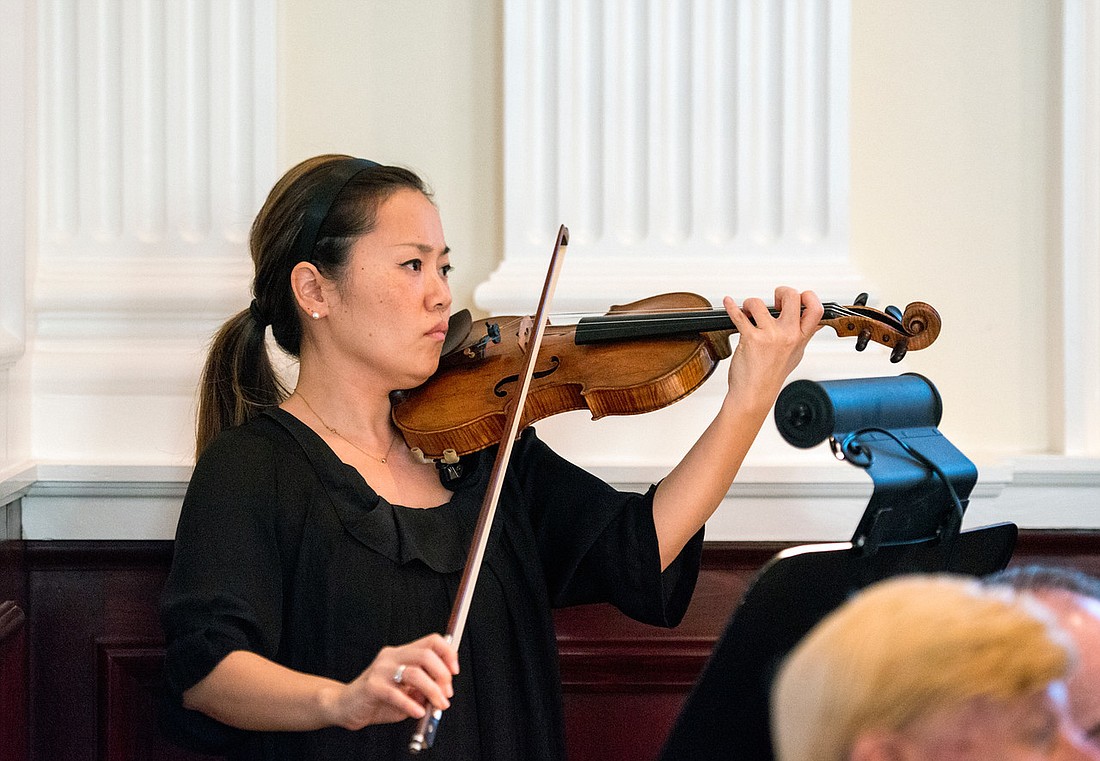- April 19, 2024
-
-
Loading

Loading

Key Chorale, Sarasota’s “Symphonic Chorus,” under the direction of Joseph Caulkins, offered a program of primarily early music that shows how brilliant programming and excellent training can add up to a special evening of music. I had my doubts about the concert because Key Chorale is a large group – around 100 singers – and, except for a handful of paid section leaders, the singers are amateurs. Well, they may not have had the formal training and backgrounds professionals have, but they truly live up to the word, Amateur: one who engages in a pursuit, study, science, art or sport because of love. And these lovers of the vocal art really came through in this concert.
But they had another strike against them before they even opened their mouths. We’ve found, through study and practice, that music of the 16th and 17th centuries is now thought to have been written for small numbers of musicians. Late 20th and early 21st century practice tells us that the Monteverdi “Vespers of 1610,” for example, should be sung by only one or two voices on a part. Same with the music of Giovanni Gabrieli, Heinrich Schutz and Michael Praetorius.
Key Chorale and Caulkins proved that any size chorus, large or small, if properly trained and rehearsed, can pull off gorgeous, stylistic readings of this great music. Take the Monteverdi, Schutz and Gabrieli works on this well thought-out program. These composers wrote, not only for the musical forces they had on hand, they also wrote for the great spaces in which the works were performed. It was the early version of the modern surround sound, with brass, strings and voices stationed in various parts of the cathedrals and churches so the listeners would feel as if they were in heaven, surrounded by choirs of angels.
Caulkins did that with his excellent soloists, starting with tenor Rob Davis, who has a large, colorful, clarion voice, standing in the rear of First United Methodist Church, to open the Vespers. After that, we heard trumpets (Michael Dobrinski, Gregory Knudsen and Daniel Medelow), trombones (Brad Williams, Laurie Penpraze and Marc Morgan), and violinists (Daniel Jordan and Chung-Yon Hong) coming at us from various parts of the church, dizzying us with sounds ranging from mysterious to divine. He also positioned some of his soloists in various parts of the church – a quartet in the balcony, singing antiphonally with the large choir on the stage, and mezzo Amy Jo Connours, who seems to go from a Gabrieli boy-alto sound to jazz and gospel with the ease of a chameleon – so we were always looking around, trying to find the source of the magic coming at us from all sides.
Organist Nancy Yost Olson, stayed at her instrument, stage left, but played with great support and clarity.
This is not easy music to sing. Its change of meters and tempos can easily stump a conductor but Caulkins was wise enough to conduct many of the triple meters in one, making long, sweeping, arched phrases that really made music. Hardest of all was a group of 16th century carols in contemporary arrangements, including a fun setting by Mack Wilberg (of the Mormon Tabernacle Choir) of “Ding! Dong! Marrily on High,” and Brian Kay’s syncopated arrangement of “Gaudete,” which brought tenor Rob Davis back to us at the end with a voice that traveled with us through the doors.
Amateur, schmamateur. The Mormon Tabernacle Choir isn’t a paid group either, but they sing circles around the music they perform. Suddenly, Key Chorale is coming into its own and we have nothing but praise for them and their conductor.